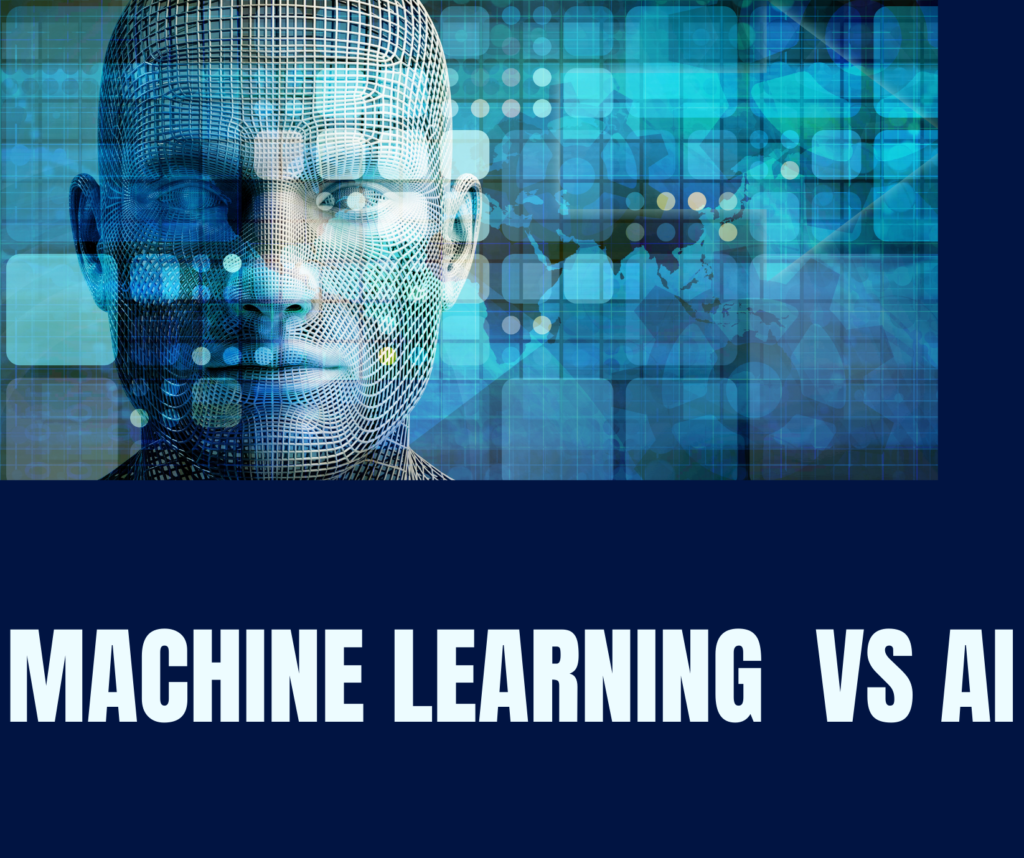The broad idea of Machine learning vs AI is to build with an intellect comparable to that of humans. A branch of artificial intelligence called machine learning (ML) is concerned with creating algorithms that let computers analyze and interpret data.
Machine Learning vs AI: Understanding the Spectrum of Intelligent Systems
The terms artificial intelligence (AI) and Machine learning vs AI (ML) are sometimes used synonymously, which can confuse their differences. Although they are related concepts, machine learning and AI have different applications in the technology field. You can improve your skills by receiving expert training in machine learning. You can learn about advanced topics, model optimization, and emerging trends from industry professionals.
Artificial intelligence: what is it?

The replication of human intellect in computers that are designed to understand, learn, and carry out tasks using reasoning similar to that of humans is known as artificial intelligence. Artificial intellect (AI) aims to make computers capable of doing activities like speech recognition, problem-solving, natural language processing, and decision-making that normally need human intellect.
AI systems are divided into two groups.
Narrow AI: Also referred to as Weak AI, Narrow AI has a restricted range of operations and is intended to carry out particular activities. Examples include chatbots used for customer service and voice assistants such as Siri.
General AI: Also known as Strong AI, General AI would be similar to human intelligence in that it could comprehend, acquire, and apply knowledge in a variety of fields. Such sophisticated AI is still theoretical and hasn’t been implemented yet.
Key Differences Between AI and Machine Learning:
Machine learning and artificial intelligence (AI) both strive to enable computers to execute intelligent tasks, but their key distinctions are in scope and capability. AI utilizes algorithms to enhance performance based on data, whereas machine learning employs algorithms to learn from data.
AI systems may employ predefined rules and logic, but machine learning requires massive datasets to train models and find patterns. Machine learning models are adaptive, able to generalize patterns from previous data and apply knowledge to new data, making them ideal for a wide range of applications.
Machine learning vs. AI: What’s the difference?
Artificial intelligence (AI)-powered apps have suddenly become quite popular, and as a result, many new technical jargon are being used. To make sense of the world, one must not only understand artificial intelligence (AI), but also the various subtypes of AI, such as artificial narrow intelligence (ANI), artificial general intelligence (AGI), and artificial super intelligence (ASI), as well as the various methods by which they are produced, such as machine learning and deep learning.
I can at least explain the most significant jargon terms, even if it would take a whole dictionary to completely explain all of the subtleties of each new one. Now let’s get started.
What is machine learning used for?
The most popular use of AI in real life is machine learning. Machine learning applications that you have likely come across include:
Spam filters in Gmail and other email programs
Recommendation algorithms on websites like Amazon, Netflix, and others
Credit card, bank, and other financial service fraud detection
Manufacturing using automated quality control
AI vs. machine learning…and then some
Here’s what to remember, if anything at all, from all of this:
Neural networks, which are developed via deep learning—a sophisticated method from machine learning—are the foundation of most modern artificial intelligence-based technologies. Artificial intelligence is an area of computer science.
What is machine learning?

computer learning is a subset of artificial intelligence that allows a computer or system to learn and improve via experience. Instead of explicit programming, machine learning uses algorithms to examine enormous volumes of data, learn from the findings, and then make educated judgments.
Machine learning algorithms improve in performance over time as they are taught and exposed to additional data. Machine learning models are the results of executing an algorithm on training data. The more data collected, the better the model will become.
Conclusion
Machine learning vs AI are related concepts in the technology industry, with AI aiming to simulate human cognition in computers for tasks like problem-solving, speech recognition, and decision-making. While they differ in scope and capabilities, both aim to enable intelligent activities. AI uses algorithms for performance improvement, while machine learning uses pre-established logic.
FAQ(s)
What connection exists between machine learning and AI?
Machine learning vs AI One use of AI is in machine learning. It’s the technique of teaching a computer without explicit instruction by applying mathematical models of data. As a result, a computer system may keep learning and developing independently via experience.
What distinguishes artificial intelligence (AI) from machine learning?
Distinctive features of AI and ML
Machine learning vs AI does not include the concept of a machine that can replicate human intellect, but artificial intelligence does. Through pattern recognition, machine learning seeks to train a computer how to carry out a certain activity and provide reliable results.


